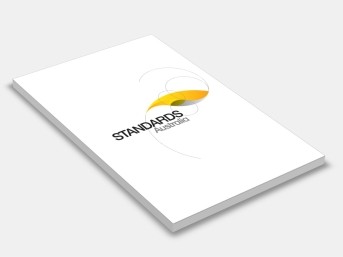AS 1657-2013 Fixed platforms, walkways, stairways and ladders - Design, construction and installation
Standards Australia
Supersedes: AS 1657-1992 Fixed platforms, walkways, stairways and ladders - Design, construction and installation
Draft Designation: DR AS 1657This Standard incorporates Amendment No. 1 (June 2016). The changes required by the Amendment are indicated in the text by a marginal bar and amendment number against the clause, note, table, figure or part thereof affected.
Changes in this edition include the following:
(a) The inclusion of single stile ladders, as they are used in other parts of the world.
(b) Access to roofs (for the installation or maintenance of equipment, e.g. air-conditioning plants) has been addressed in this edition.
(c) References to the regulatory authority have been removed.
(d) All requirements pertaining to a particular form of access (e.g. stairways, ladders) are grouped together.
(e) A broader scope of testing of products and more complete test methods have been included.
(f) The issue of slip resistance of walking surfaces has been highlighted, and informative references to relevant Australian Standards and handbooks included.
(g) Testing of a wider range of products has been introduced for use when verification by engineering analysis is not possible, practicable or when the products are proprietary products and proof of performance is required.
Statements expressed in mandatory terms in notes to figures are deemed to be requirements of this Standard.
The terms 'normative' and 'informative' have been used in this Standard to define the application of the appendix to which they apply. A 'normative' appendix is an integral part of a Standard, whereas an 'informative' appendix is only for information and guidance.
This Standard incorporates a Commentary on some of the clauses. The Commentary directly follows the relevant clause, is designated by 'C' preceding the clause number and is printed in italics in a panel. The Commentary is intended to help readers understand the background to the clause but does not form part of the clause.
First published as CA10-1938. Fourth edition 1971. Revised and redesignated AS1657-1974. Fourth edition 2013. Reissued incorporating Amendment No. 1 (June 2016).
Sets out requirements for the design, selection, construction and installation of fixed platforms, walkways, stairways and ladders that are intended to provide safe access to places used by operating, inspection, maintenance and servicing personnel.
This Standard also applies to the following:
(a) Movable platforms that are permanently configured but that may be site adjustable or site assembled/modified.
(b) Permanently installed roof access, where such access is for the purpose of installing, operating, inspecting, maintaining or servicing equipment that is located on, or is accessible from, the roof.
(c) Permanently installed access for inspection and maintenance of the roof itself.
Note: This Standard may also be used for guidance in providing access to some parts of mobile plant, light and telecommunication towers, wind turbine towers and water and sewerage facilities. While such access may not be capable of complying with all the requirements of this Standard, the principles and imposed actions should be followed.
Contents:
Section 1: Scope And General
Section 2: Means Of Access
Section 3: Design And Fabrication
Section 4: Platforms And Landings
Section 5: Walkways
Section 6: Physical Edge Protection
Section 7: Access Between Levels
Section 8: Labelling And Documentation
Appendix A: Recommended Component Dimensions And Materials For Edge Protection
Appendix B: Testing Of Guardrailing Comprising Rails And Posts
Appendix C: Testing Of Infill
Appendix D: Test Of Stair Assembly
Appendix E: Test Reports
Appendix F: Testing Of Fixed Ladders
Appendix G: Selection Of Stairways, Walkways And Fixed Ladders
Appendix H: Fall Protection
Appendix I: Safe Ladder Design, Installation And Use
Appendix J: Roof Access
Platforms, Gangways, Stairways and Ladders.
SF-013
Australian Aluminium Council; Australian Building Codes Board; Australian Industry Group; Australian Rope Access Association; CSIRO; Department of Justice (Tasmania); Energy Networks Association; Engineers Australia; Ladder Manufacturers Association of Australia; Master Builders Australia; Property Council of Australia; WorkCover New South Wales; WorkSafe Victoria.
